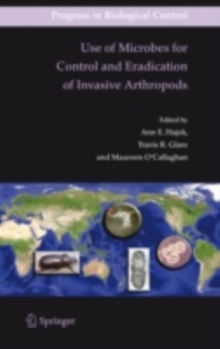
Classical Biological Control of Bemisia tabaci in the United States - A Review of Interagency Research and Implementation PDF
Edited by Juli Gould, Kim Hoelmer, John Goolsby
Part of the Progress in Biological Control series
Description
This book reviews interagency research and development of classical (importation) biological control of Bemisia tabaci (biotype B) conducted in the USA from 1992- 2002.
The successful discovery, evaluation, release, and establishment of at least five exotic B. tabaci natural enemies in rapid response to the devastating infestations in the USA represents a landmark in interagency cooperation and coordination of multiple disciplines.
The review covers all key aspects of the classical biocontrol program, beginning with foreign exploration and quarantine culture, through dev- opment of mass rearing methodology, laboratory and field evaluation for efficacy, to field releases, integration with other management approaches, and monitoring for establishment and potential non-target impacts.
The importance of morphological and molecular taxonomy to the success of the program is also emphasized.
The book's contributors include 28 USDA, state department of agriculture, and univ- sity scientists who participated in various aspects of the project.
Bemisia tabaci continues to be a pest of major concern in many parts of the world, especially since the recent spread of the Q biotype, so the publication of a review of the biological control program for the B biotype is especially timely.
We anticipate that our review of the natural enemies that were evaluated and which have established in the USA will benefit researchers and IPM practitioners in other nations affected by B. tabaci.
Information
-
Download - Immediately Available
- Format:PDF
- Publisher:Springer Netherlands
- Publication Date:01/03/2008
- Category:
- ISBN:9781402067402
Information
-
Download - Immediately Available
- Format:PDF
- Publisher:Springer Netherlands
- Publication Date:01/03/2008
- Category:
- ISBN:9781402067402










